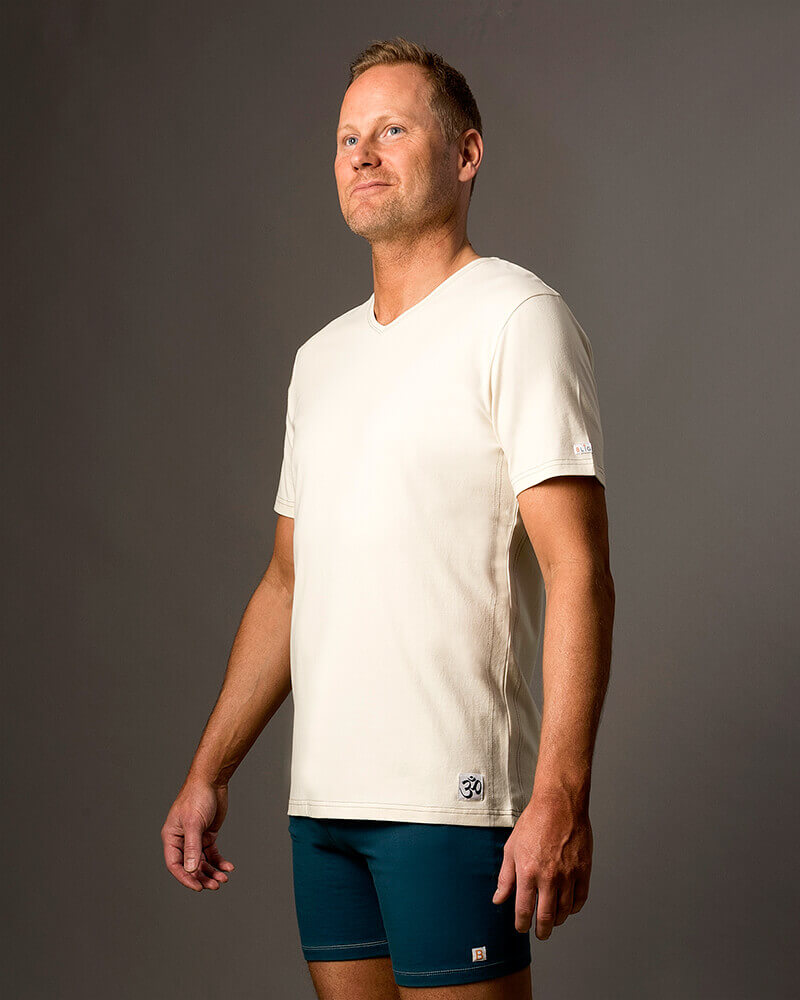The organic cotton process
From seed to fashion
The use of cotton is 7000 years old
Cotton has been used for 7000 years by humans for clothing. It takes sun, water and fertile soil to produce cotton. From the planted seed it take around 25 weeks until the cotton bud naturally splits up and can be harvested.
Organic cotton don’t use chemicals or fertilizers in the cultivation process. Less than 1% of the worlds cotton production is organic. I will try to describe the process in a very simple way. Here we go…

CULTIVATION
In India this process starts every year usually around April. The harvest period is from October to January. The main cotton producing countries are USA, China, India and Pakistan.
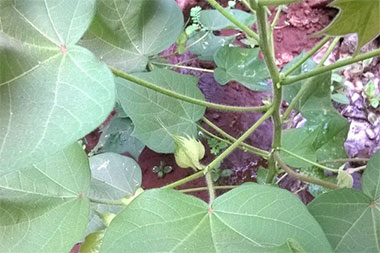

“I wish they’d had electric guitars in cotton fields back in the good old days.
A whole lot of things would’ve been straightened out.”
– Jimi Hendrix

The cotton buds will soon split up and be ready for harvest
Cotton ready for plucking. There are mainly 3 types of cotton that are used for commercial use. Long-, -medium and -short staple cotton.
The type on the pictures are long staple cotton, considered the best quality. All BLIGHT´s clothes are made of this type of cotton.

The organic farmer puts the natural cycle in the center by:
Resources
Conserve natural resources so that the least possible harm to the environment arises
preserving
Preserving soil fertility in the long term
recycling
Create the greatest possible recycling of nutrients

PLUCKING
Picking the cotton is made manually and takes a lot of labour force. This process lasts up to three months The monsoon starts in mid June at Gujarat region.



BALES
After the plucking the cotton is packed into bales. Every bale weights around 100 kg.
Bales ready for spinning after the ginning process. The cotton is dried and cleaned.


COMBING
The combing process. Preparing for count & spinning. Still a while before the yoga clothes can be produced.
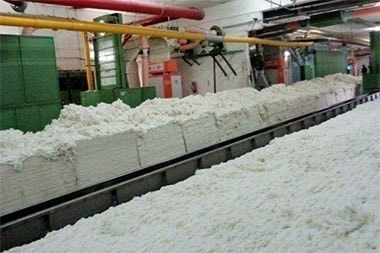
Willie Nelson
“I was influenced a lot by those around me – there was a lot of singing that went on in the cotton fields.”
B-LIGHT Sportswear. All organic. All yours.

COUNT & CONNING
This process is called count. The size of yarn is defined by its weight and fineness.

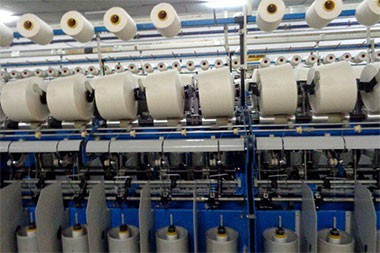

SPINNING
This is the last process for the yarn. Once the yarn is ready the knitting or weaving can start. Since the invention of “Spinning Jenny” year 1764 the technology has made huge progress. Spinning Jenny made it possible for one worker to handle 8 spools simultaneously.
The modern spinning machine handles hundreds of spools and are also managed by one person. I think James Hargreaves, inventor of Spinning Jenny, would be quite impressed.

Modern spinning machine

Spinning Jenny from 1764

KNITTING
In the middle of the machine you can see part of the fabric. Until the first cut it has the shape of a tube. A fantastic machine!
After the spinning process you get yarn. Yarn can be used with different methods to produce fabric. Weaving and knitting are the most common. The finishing process includes cleaning and dying and sometimes printing.
The process for dying organic is called Low Impact which means saving water and not using chemicals.
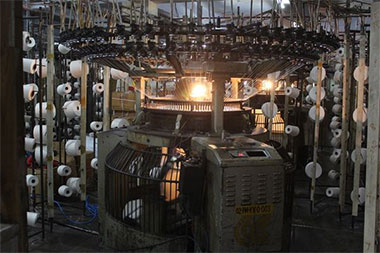
Knitting machine
Did you know that…
The certifying company for organic cotton is called Global Organic Textile Standard or GOTS. On their web page you will find the following criteria:
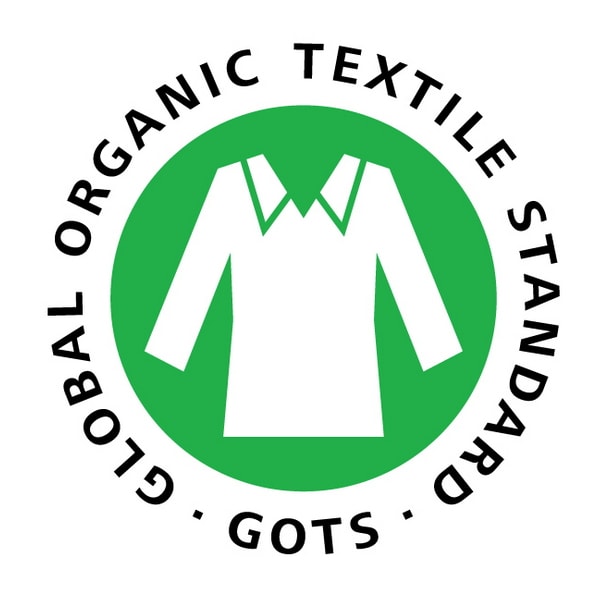

Separated
At all stages through the processing organic fibre products must be separated from conventional fibre products and must to be clearly identified

Chemicals
All chemical inputs (e.g. dyes, auxiliaries and process chemicals) must be evaluated and meeting basic requirements on toxicity and biodegradability/eliminabilityd

Heavy Metals
Prohibition of critical inputs such as toxic heavy metals, formaldehyde, aromatic solvents, functional nano particles, genetically modified organisms (GMO) and their enzymes

Synthetics
The use of synthetic sizing agents is restricted; knitting and weaving oils must not contain heavy metals.

Bleaches
Bleaches must be based on oxygen (no chlorine bleaching)

Dying
Azo dyes that release carcinogenic amine compounds are prohibited.
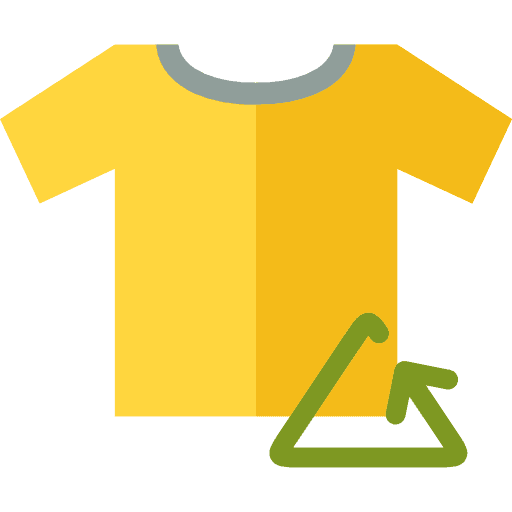
printing
Discharge printing methods using aromatic solvents and plastisol printing methods using phthalates and PVC are prohibited.

PVC
Restrictions for accessories (e.g. no PVC, nickel or chrome permitted)

policy
All operators must have an environmental policy including target goals and procedures to minimise waste and discharges

water
Wet processing units must keep full records of the use of chemicals, energy, water consumption and waste water treatment, including the disposal of sludge. The waste water from all wet processing units must be treated in a functional waste water treatment plant.

packaging
Packaging material must not contain PVC. Paper or cardboard used in packaging material, hang tags, swing tags etc. must be recycled or certified according to FSC or PEFC
• THE SEWING FACTORY
In the middle of the machine you can see part of the fabric. Until the first cut it has the shape of a tube. A fantastic machine!
After the spinning process you get yarn. Yarn can be used with different methods to produce fabric. Weaving and knitting are the most common. The finishing process includes cleaning and dying and sometimes printing.
The process for dying organic is called Low Impact which means saving water and not using chemicals.
Fabric Cutting
Sewing
Finishing department
How do I know that the manufacturer follow the GOTS rules?
Because of the Quality Assurance System from GOTS:
A company participating in the GOTS certification scheme must work in compliance with all criteria of the standard. GOTS relies on a dual system to check compliance with the relevant criteria consisting of on-site auditing and residue testing.
Some GOTS facts
Certified Farming
Fibre producers (farmers) must be certified according to a recognised international or national organic farming standard that is accepted in the country where the final product will be sold.
ISO
Certifiers of fibre producers must be internationally recognised through ISO 65/17065, NOP and/or IFOAM accreditation. – They also must be accredited to certify according to the applicable fibre standard
Post Harvest Handling
Operators from post-harvest handling up to garment making and traders have to undergo an onsite annual inspection cycle and must hold a valid GOTS scope certificate applicable for the production / trade of the textiles to be certified
GOTS accreditation
Certifiers of processors, manufacturers and traders must be internationally accredited according to ISO 65/17065 and must hold a ‘GOTS accreditation’ in accordance with the rules as defined in the ‘Approval Procedure and Requirements for Certification Bodies’


 Svenska
Svenska Deutsch
Deutsch







